ASUS Eee Pad Transformer Review
by Anand Lal Shimpi on April 21, 2011 4:00 AM ESTI've been on a bit of a tablet kick lately, so even if you have dinner with me—tablets are bound to come up (I only break out the SSD conversation for the truly patient). Last week I had the pleasure of having dinner with Tony Tamasi and Jim Black of NVIDIA, and of course—tablets came up.
I've been thinking about device synergy, something I brought up in our PlayBook review. The problem is as follows: if I'm on my desktop with half a dozen tabs open and perhaps a PDF as well, but I decide to switch over to a tablet—there's no quick way that I can transition my reading environment between the devices. What I have to do is sit down on the couch, whip out my tablet, and manually navigate to each website and redownload/open the PDF. What I'd like to do is something along the lines of HP's Touch to Share, but just on a larger scale.
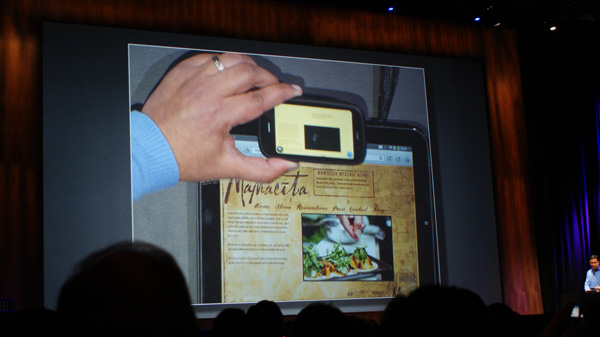
HP demonstrating Touch to Share
I posed this question to Tony when he asked me about future tablet technologies. From Tony (and NVIDIA's perspective), the problem is a non-issue because eventually all computing is done on your smartphone and you simply dock it from one set of input/output devices to the next. At your desk you'll dock your smartphone to a large display, keyboard and mouse. On the go you'll either have your smartphone or dock it into a notebook like chassis. Presumably you'll have a mid-sized display you could tether it to for tablet use as well.
NVIDIA isn't the only company that believes in the future of dockable computing. Earlier this year Motorola released the Atrix, arguably the best overall Android phone on the market today, with an optional laptop dock. While Motorola's docked experience wasn't all that great, treat it as a proof of concept—there's potential here.
You might argue that Motorola's shortcomings with its laptop dock are a result of its unfamiliarity with making PCs; after all Motorola has never shipped a laptop, just smartphones. You might also argue that a PC maker would have an easier time delivering a more polished, functional solution. You might assume that a company like ASUS might be a good candidate for such a thing. You'd be right.
The Eee Pad
ASUS was at the forefront of the netbook revolution thanks to its close partnerships with Intel and Microsoft. ASUS has been all but absent from the smartphone and tablet revolution again, because of its two key partnerships: Intel and Microsoft. Both Intel and Microsoft lay dormant while the smartphone and tablet revolution pick up speed; granted this may all change around Windows 8, but for now it's the truth. If you're a partner of both Intel and Microsoft, you too lay dormant while competitors like Apple, Samsung, Motorola and LG take your cake. After more than enough thumb fiddling, it was ASUS' turn for a slice. The result is this:
Technically it's called the Eee Pad Transformer TF101 thanks to its ability to transform into a netbook/notebook with an optional keyboard dock and ASUS' inability to shy away from long model names. From here on out we'll just call it the Eee Pad.
At a very high level, the Eee Pad is yet another Honeycomb tablet. It's got an NVIDIA Tegra 2 SoC, 1GB of LPDDR2 memory, a WiFi radio, and 16GB of NAND on-board. Delve a little deeper and the story quickly becomes more interesting.
We'll start at the price: $399 for 16GB WiFi. That's $100 cheaper than the equivalent iPad, and $200 cheaper than the lowest priced Xoom. I've often called tablets luxury devices, but ASUS is putting the price pressure necessary on these things for the market to really thrive. While $399 isn't into the "why not?" category just yet, I like where ASUS is headed with this. In other words, I don't believe $399 is the floor here either. Up to now tablets (and smartphones) have been a cash cow for those involved. I don't mind there being premium offerings; I just also want to see something more affordable.
The low price point alone is enough to make the Eee Pad worth considering if you want an Android tablet, but surprisingly enough ASUS didn't sacrifice much in the way of quality to hit it.
The chassis isn't all metal, nor is it soft touch plastic, but that's not to say the feel is bad at all. On the front you've got mostly glass surrounded by a thin strip of metal that wraps around the Eee Pad. Around back there's a textured plastic covering that seems oddly reminiscent of a notebook (the foreshadowing here is quite thick).
The feel is what's most surprising about the Eee Pad. Despite not spending a ton on materials, ASUS managed to build a very comfortable to hold and use tablet. There's a bit of creakyness in the back plastic if you squeeze the Eee Pad, but it's not enough to make the tablet feel cheap. A benefit of not being made of aluminum is I'm not as afraid to set the Eee Pad down on a table as I am the iPad. It feels more rugged, more casual.
| Tablet Specification Comparison | ||||||
| Apple iPad 2 | ASUS Eee Pad | BlackBerry PlayBook | Motorola Xoom | |||
| Dimensions | 241.2mm x 185.7mm x 8.8mm | 271mm x 175mm x 12.95mm | 194mm x 130mm x 10mm | 249.1mm x 167.8mm x 12.9mm | ||
| Display | 9.7-inch 1024 x 768 | 10.1-inch 1280 x 800 | 7-inch 1024 x 600 | 10.1-inch 1280 x 800 | ||
| Weight | 601g (WiFi only) | 675g | 425g | 730g | ||
| Processor | 1GHz Apple A5 (2 x Cortex A9) | 1GHz NVIDIA Tegra 2 (2 x Cortex A9) | 1GHz TI OMAP 4430 (2 x Cortex A9) | 1GHz NVIDIA Tegra 2 (2 x Cortex A9) | ||
| Memory | 512MB | 1GB | 1GB | 1GB | ||
| Storage | 16GB up to 64GB | 16GB + microSD card | 16GB up to 64GB | 32GB + microSD card | ||
| Pricing | $499 up to $829 | $399 | $499 up to $699 | $799 | ||
The Eee Pad has the thickness of an original iPad without the density, so it doesn't feel as fatiguing to hold—partially due to its larger size. It's definitely the largest ARM based tablet I've used, making it suboptimal for porting around town, but it's very nice to use at home. The Eee Pad is like the comfort food of tablets; it's not the most exquisite but it just feels good. My only complaint about the design is thickness. The iPad 2 and new Galaxy Tab have spoiled us here. I suspect we'll get a nicely redesigned version with Kal-El by the end of the year if NVIDIA works hard enough.
When cutting costs the display is usually the first to go, but thankfully our complaints have been heard. Not only has ASUS improved display quality on the notebook side, but the Eee Pad ships with an IPS panel guaranteeing good viewing angles and image quality. The display is a Xoom-like 1280 x 800 and measures 10.1-inches on the diagonal.
ASUS includes two small speakers, one on either side of the display. A volume rocker and power/lock button are both on the left edge of the Eee Pad. On the right side there's a headphone port, mini HDMI out and microSD slot.
The Eee Pad has two cameras: a 1.2MP front facing camera and a 5MP rear camera. There's no flash present.
Along the bottom edge of the Eee Pad is a 40-pin ASUS dock connector, which enables the Transformer part of the Eee Pad experience. ASUS ships the Eee Pad with a 40-pin ASUS dock to USB cable as well as a USB to AC adapter for wall charging.
Charging over USB is ill advised at this point since it'll take somewhere over 16 hours to fully charge the Eee Pad over a standard USB port. ASUS claims this will be fixed with a future software update. I didn't have the time to measure exactly how long a full charge over USB would take; I just measured long enough to know it would be a problem.


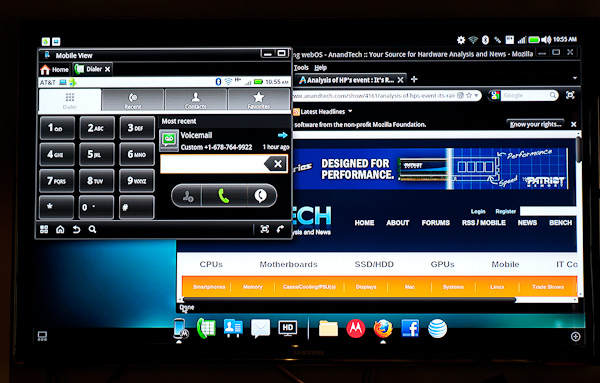
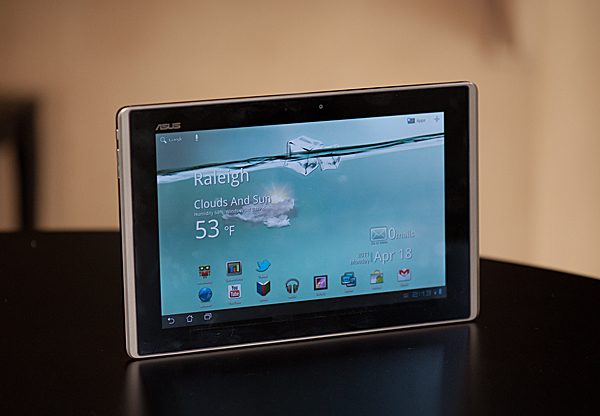
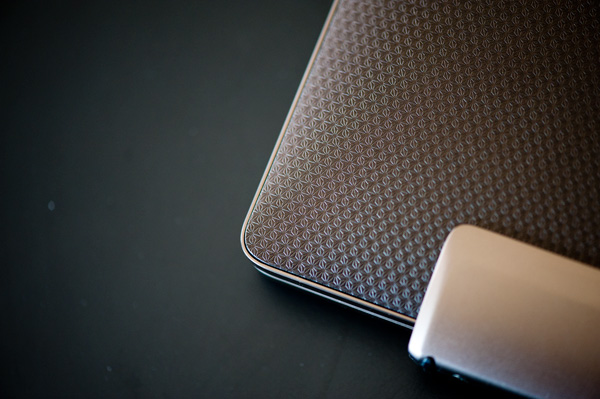
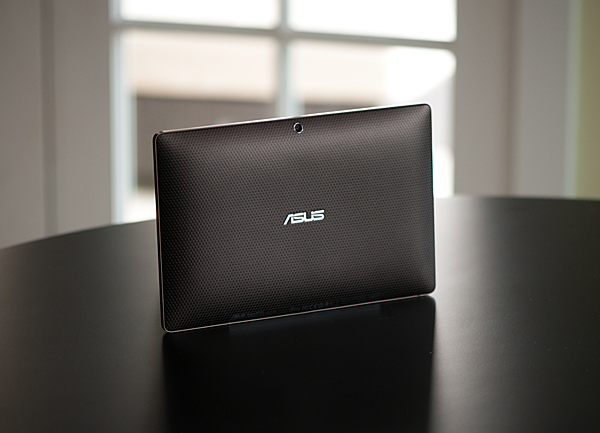
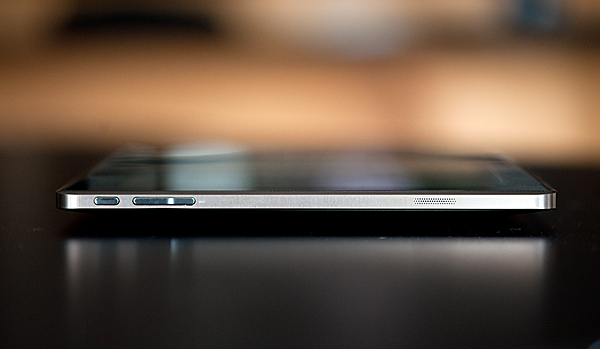

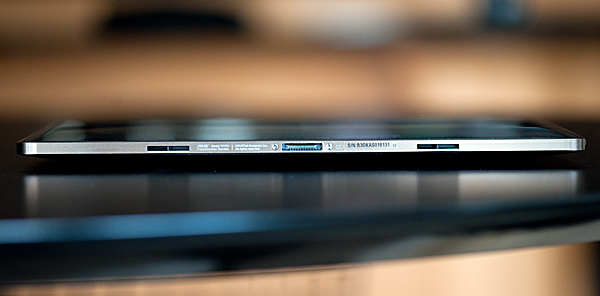









127 Comments
View All Comments
Elrondolio - Thursday, April 21, 2011 - link
None of these shots are exactly close... even something as exotic as the Noktor 50 f/0.95 (in practice, a somewhat pedestrian lens up to f/2 or so) can focus in far closer than the shots, around 2". Its certainly possible these were taken north of f/2, but the bokeh on them is very nice (north of 7 blades, I'd expect).whiteonline - Thursday, April 21, 2011 - link
I don't know. Looks like a bit of post processing effects. Look at the last photo with the power cable; the focus is a horizonal line, not radial. And very sharply changes between in and out of focus.strikeback03 - Wednesday, April 27, 2011 - link
as he has mentioned having Nikon SLRs in the past, I checked the minimum focus distance for 50 and 85mm lenses available for Nikon at B&H. The 50s are all in the 45-50cm range, and the 85s are 85-100cm.Yes I would expect the lens does was designed for nice bokeh (curved aperture blades, etc)
MrCromulent - Thursday, April 21, 2011 - link
I guess 720p and 1080p playback via HDMI won't be a problem anymore for Honeycomb tablets, will it?IronPalm - Thursday, April 21, 2011 - link
I ordered this tablet just see how well I can use flash based dashboards on it, I then saw a Xoom and was wondering if I should cancel my order.Compared to what I've read recently this review was done well, a refreshing change, as others have said a great review.
Now the only thing i'm wondering is how the user experience compares to an ipad (e.g. the touch sensitivity etc). I noticed there was a bit of lag on the Xoom, but I haven't noticed that playing with display ipad's in tech stores.
I hope this isn't a repeat of an earlier episode in my life...I wanted an iPhone, but didn't really want one, so I got one for my wife. After playing with it (to update software of course) I was impressed by the touch screen. My resistive WM 6.5 didn't cut after that. I dropped it by accident around the time when the HTC HD2 came out with it's capacitive touch screen, great I though, just what I'd been looking for. Unfortunately not all capacitive touch screens are equal.
kmmatney - Friday, April 22, 2011 - link
The iPad does have flash, to some degree:http://www.engadget.com/2011/03/10/ipad-gets-flash...
don't know if a flash-based apps would work, though
Wanderer200 - Thursday, April 21, 2011 - link
Very nice extended review, thumbs up!but i was wondering about one thing:
"The price point alone is enough to make the Eee Pad the Honeycomb tablet to get assuming you don't need integrated GPS"
Because on the Asus website the specs say is does have GPS and in other review i saw google maps in action... so i assume is does have GPS?
I also read about the firmware upgrade wich is downloadable right now, it fixxes some of the issues you encountered with the transformer (like the camera green screen) did you try to upgrade your firmware?
Anand Lal Shimpi - Thursday, April 21, 2011 - link
I've corrected the review - GPS hardware is present in the Eee Pad Transformer, although some apps require that you are actively connected via WiFi in order to use GPS.I updated the firmware on our review sample, however there are apparently one or two more revisions left before systems go on sale next week. I should have updated software soon.
Take care,
Anand
jbh129 - Thursday, April 21, 2011 - link
At this point, there is no legitimate reason to buy a tablet that is not an iPad.eddman - Thursday, April 21, 2011 - link
Steve, is that you?